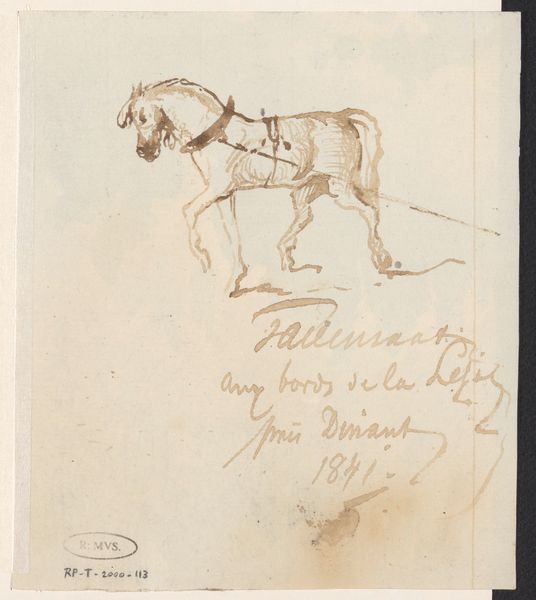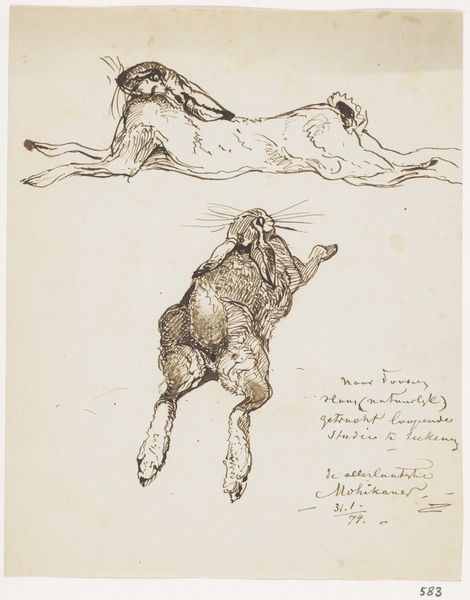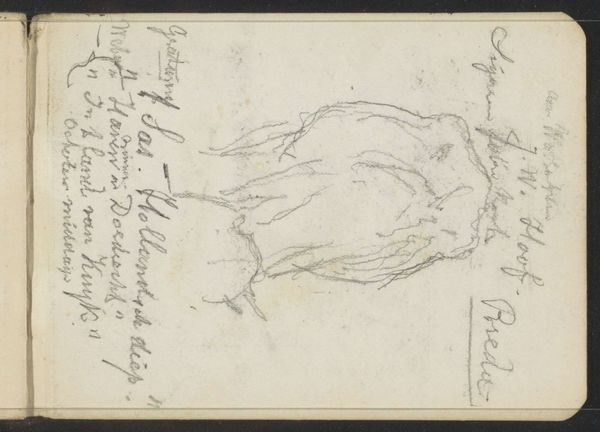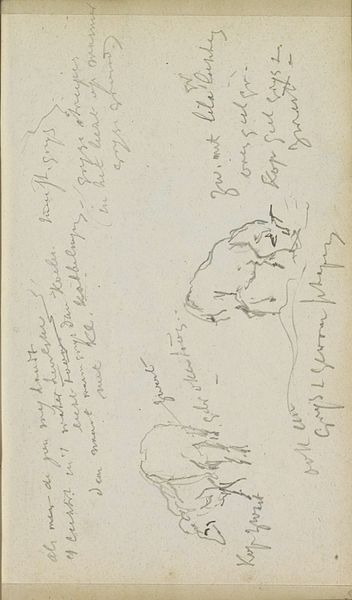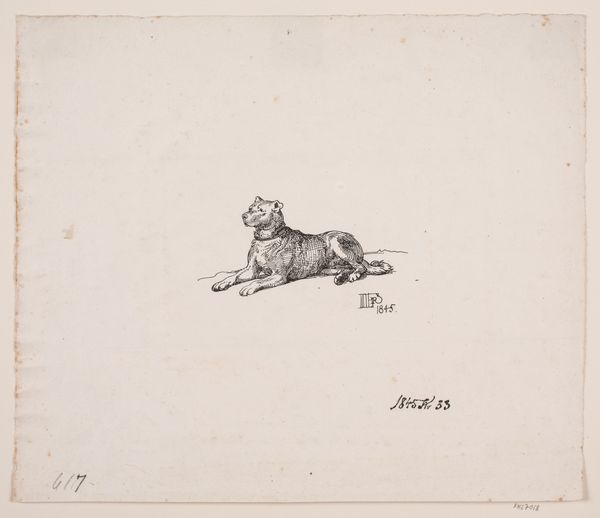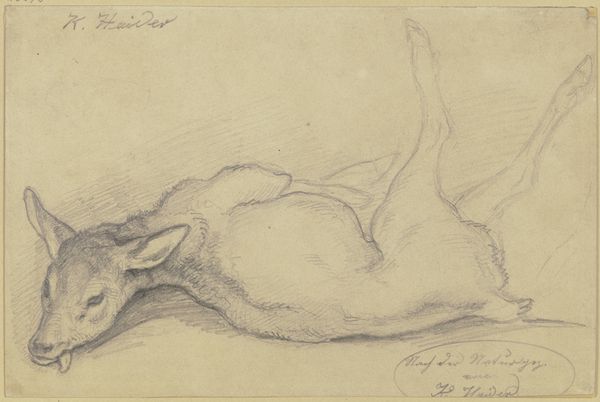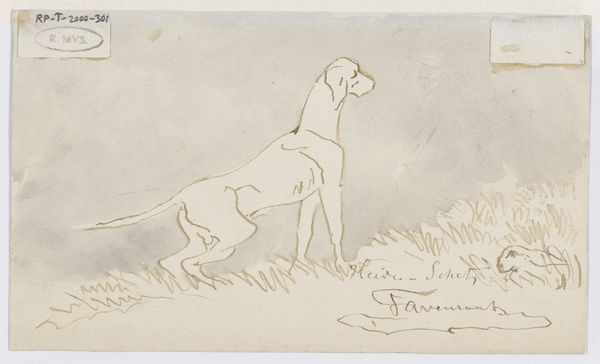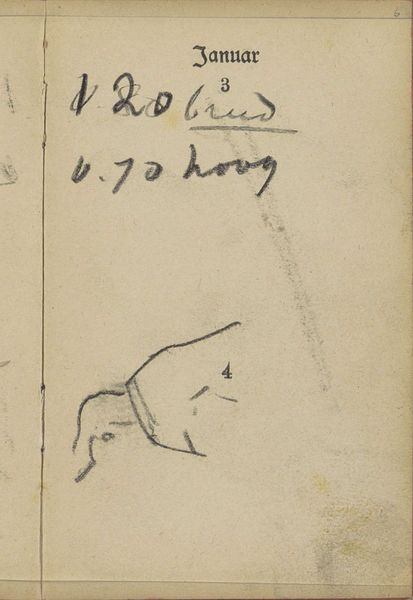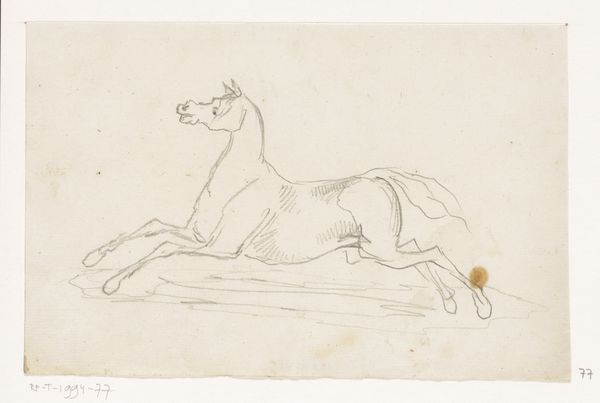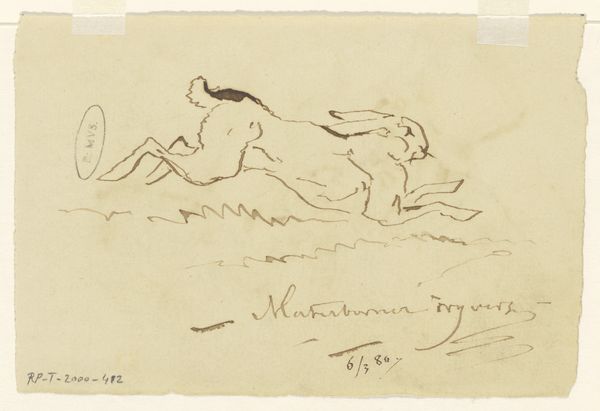
drawing, paper, ink, pen
#
drawing
#
animal
#
landscape
#
figuration
#
paper
#
ink
#
pen-ink sketch
#
pen
#
realism
Dimensions: height 102 mm, width 158 mm
Copyright: Rijks Museum: Open Domain
Editor: This is "Snelle haas," or "Fast Hare," a pen and ink drawing on paper by Johannes Tavenraat, created sometime between 1840 and 1880. It feels very spontaneous, like a quick sketch capturing a fleeting moment. I’m curious, how do you interpret this work within its historical context? Curator: It's easy to appreciate the immediacy of the line work. Think about 19th-century Dutch society: burgeoning industrialization but also a persistent romanticism about the natural world. Images of animals, especially in dynamic poses like this, often served as a reminder of a life outside of the increasingly regulated urban environment. The hare itself can be a multifaceted symbol - a creature of the hunt but also representing vulnerability and swift escape. Given the inscription visible on the artwork, what can that suggest about it’s potential audience? Editor: You mean the script “Full speed… 3 times missed shots! … Waiting Hunters!” Does it hint that this drawing might have been a personal joke, or perhaps commentary on the changing role of hunting in a more regulated society? It could even be seen as a social commentary piece on class and the hunting "sport." Curator: Exactly. It's about access and power. Were there debates on poaching, land ownership or hunting privileges impacting the production of Tavenraat’s hare? Consider how this drawing challenges our assumptions about depictions of nature. Is it pure observation or a reflection on societal tensions? Editor: So, it’s more than just a simple depiction of a running hare; it is tied up with societal norms. That definitely shifts my perception. I guess it’s a good reminder that art can tell us just as much about people as the subjects that they represent. Curator: Precisely. And how institutions shape our understanding. Now displayed in a museum, a symbol of wildness is framed within a context of history, class, and perhaps even lost freedoms.
Comments
No comments
Be the first to comment and join the conversation on the ultimate creative platform.
